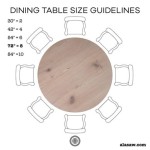How To Get Wax Out Of a Polyester Tablecloth
Polyester tablecloths offer a practical and aesthetically pleasing addition to dining and event settings. Their durability and resistance to wrinkles make them a popular choice. However, the nature of festive occasions often involves candles, increasing the likelihood of wax spills. Removing wax from polyester requires a careful and methodical approach to avoid damage to the fabric while effectively eliminating the wax residue and any associated staining.
The following guide provides a detailed explanation of several effective methods for removing wax from a polyester tablecloth, encompassing various techniques and considerations for different types of wax and fabric damage. This includes addressing both hardened wax and any lingering color stains that may persist after the initial wax removal.
Freezing the Wax
One of the most effective initial steps for removing wax from a polyester tablecloth is to harden the wax as much as possible. This allows the wax to become brittle and easier to detach from the fabric fibers. The primary method for achieving this is through freezing.
To begin, gently scrape off any excess wax that is already loose on the surface of the tablecloth. Avoid applying excessive force during this initial scraping, as this could further embed the wax into the fabric or potentially damage the fibers. A dull butter knife or the edge of a credit card can be used for this purpose. The goal is simply to remove any readily removable debris.
Next, fold the tablecloth so that the wax stain is facing outward. Place the tablecloth in a freezer-safe bag or wrap it securely in plastic wrap. This prevents moisture from affecting the fabric and also contains any wax particles that may detach during the freezing process.
Place the wrapped tablecloth in the freezer for a minimum of one to two hours. The duration of freezing depends on the size and thickness of the wax deposit. Larger deposits may require a longer freezing period to ensure the wax is thoroughly hardened. Check the wax periodically to assess its hardness.
Once the wax is frozen solid, remove the tablecloth from the freezer. Carefully unfold the fabric and assess the wax's consistency. It should be brittle and easily cracked. If the wax is still pliable, return the tablecloth to the freezer for an additional period.
Using a dull knife or the edge of a credit card, gently chip away at the hardened wax. Begin at the edges of the wax deposit and work inwards. The frozen wax should fracture and detach from the fabric with minimal effort. Avoid applying excessive pressure or scraping aggressively, as this could damage the polyester fibers or spread the wax further.
As the wax chips away, collect the fragments and dispose of them properly. Continue this process until the majority of the hardened wax has been removed from the tablecloth. Some wax residue may remain embedded in the fabric, which will require further treatment.
Using Heat to Absorb the Wax
After removing the majority of the hardened wax through freezing, a heat-based method is often necessary to extract the remaining wax residue from the polyester fibers. This technique involves using heat to melt the wax and absorbent materials to draw the melted wax away from the fabric.
Gather the necessary materials: an iron (set to a low or medium heat setting, depending on the manufacturer’s care instructions for the polyester tablecloth), clean paper towels or brown paper bags, and a clean, flat ironing surface. Avoid using high heat, as this could melt the polyester fibers or cause the wax to spread further.
Place the tablecloth on the ironing surface with the wax stain facing upwards. Position a clean paper towel or a section of a brown paper bag directly over the wax stain. The absorbent material will act as a wick, drawing the melted wax away from the fabric.
With the iron set to the appropriate heat level, gently press the heated iron onto the paper towel or brown paper bag covering the wax stain. Move the iron in a slow, circular motion. The heat will melt the wax trapped in the polyester fibers, and the absorbent material will absorb the melted wax.
Periodically check the paper towel or brown paper bag. As it becomes saturated with wax, replace it with a fresh, clean piece. Continue this process until the paper towel or brown paper bag no longer absorbs any more wax from the fabric. This indicates that the majority of the remaining wax residue has been removed.
After removing as much wax as possible with the heat and absorbent material, inspect the tablecloth for any remaining wax residue or discoloration. If residue or staining persists, further treatment will be required.
Addressing Remaining Stains
Even after successfully removing the majority of the wax, a colored stain may linger on the polyester tablecloth, particularly if the wax was heavily pigmented. Addressing these remaining stains requires a targeted approach using appropriate cleaning agents and techniques.
Before applying any cleaning agent, test it on an inconspicuous area of the tablecloth to ensure it does not cause discoloration or damage to the fabric. This is crucial, as some cleaning agents may react adversely with certain dyes or finishes used in polyester textiles.
For mild staining, a gentle laundry detergent or dish soap may be sufficient. Dilute a small amount of the chosen cleaning agent in lukewarm water. Apply the solution directly to the stained area, gently blotting with a clean cloth. Avoid rubbing vigorously, as this could spread the stain or damage the fabric.
Allow the cleaning solution to sit on the stain for several minutes to allow it to penetrate the fabric fibers and loosen the stain. After a short soaking period, blot the area again with a clean, damp cloth to remove the cleaning solution and any loosened stain residue.
If the stain persists after using mild detergent or dish soap, a stain remover specifically designed for fabrics may be necessary. Follow the manufacturer’s instructions carefully, ensuring the stain remover is compatible with polyester fabrics. Apply the stain remover directly to the stained area and allow it to sit for the recommended time.
After the stain remover has had sufficient time to work, rinse the treated area thoroughly with lukewarm water to remove any remaining residue. Blot the area dry with a clean cloth.
For stubborn stains that do not respond to conventional stain removers, a solution of diluted white vinegar may be effective. Mix equal parts white vinegar and water. Apply the solution to the stain and allow it to sit for several minutes. Then, blot the area with a clean cloth and rinse thoroughly with lukewarm water.
After treating the stain, launder the tablecloth according to the manufacturer's instructions. This will help to remove any remaining cleaning agent residue and ensure the stain is fully eliminated. Inspect the tablecloth after laundering to ensure the stain has been removed. If the stain persists, repeat the cleaning process before drying, as heat from a dryer may set the stain.
After the cleaning process, allow the tablecloth to air dry or tumble dry on a low heat setting. Avoid using high heat, as this could damage the polyester fibers or set any remaining stains. Once the tablecloth is dry, inspect it carefully to ensure the wax and any associated stains have been completely removed. If any residue or staining remains, repeat the cleaning process.

Removing Wax From Tablecloth Effective Tips And Tricks Creative Homemaking

Removing Wax From Tablecloth Effective Tips And Tricks Creative Homemaking

How To Remove Candle Wax From A Tablecloth Nicole Gibbons Style

How To Get Wrinkles Out Of Polyester Tablecloths 8 Easy Ways Tablecoversnow Com

Tabletek Rectangle Black Polyester Cloth Table Cover Hemmed 90 X 132 10 Count Box

132 Round Polyester Tablecloth Terracotta Burnt Orange Wedding

How To Get Mold And Mildew Out Of Polyester Tablecloths Clorox

White Tablecloth Linens For Weddings Elegant Events Cv

Table Tek Rectangle White Polyester Cloth Cover Hemmed 90 X 132 10 Count Box

120 White Seamless Polyester Tablecloth








